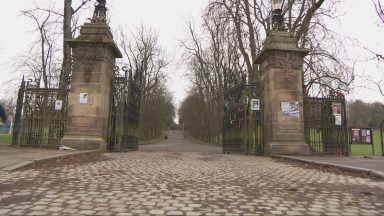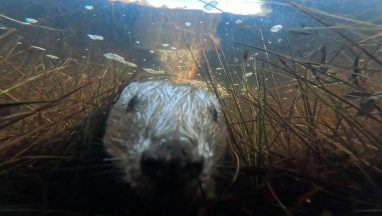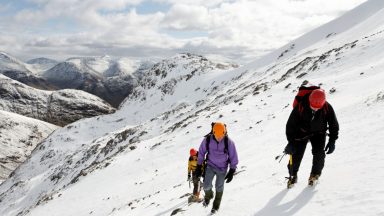More than 420 staff at National Trust for Scotland (NTS) are at risk of redundancy as the charity faces a £28m loss due to the coronavirus pandemic.
The conservation charity has launched a “radical” series of emergency actions designed to ensure its survival and to protect the “birthright of generations yet to come”.
As well as placing 429 staff in its permanent workforce at risk of redundancy, it will approach grant-giving bodies and the Scottish Government for financial support and seek to sell non-heritage land and property.
The trust, which cares for places such as Culloden, Culzean Castle and Hill House in Helensburgh, said its income has been virtually eradicated during what is normally the busiest period for membership recruitment and property visits.
Its estate and holiday accommodation has been closed since March to comply with lockdown restrictions.
NTS said its income from all sources is forecast to collapse by £28m this year and to fall again in 2021 even if current restrictions are relaxed, while this does not include estimated investment losses of £46m due to stock market conditions.
Its chief executive, Simon Skinner, said: “The extreme and unprecedented public health emergency has put the charity’s future in doubt.
“This is despite us running the trust in a financially prudent way, building up our reserves and latterly taking critical decisions at the outset of this crisis, reducing our expenditure to a minimum, foregoing the recruitment of seasonal staff, terminating temporary and fixed-term contracts and furloughing a large proportion of our permanent staff.
‘Some people may not care that a charity is in trouble or see heritage as having little importance just now – but if the trust goes down then what will be lost will impoverish Scotland forever.’
Simon Skinner, chief executive
“With some level of restrictions likely to apply post-lockdown and having effectively missed the busiest part of the visitor season, I see little prospect of us being able to return to more normal levels of membership, visitation and income for the rest of this year and beyond.
“Even after we’ve done all we can to stave off the worst, it’s crystal clear that we need radical action if we are to buy more time that will give the trust space to overcome income loss and weather depressed economic conditions.”
He said that as well as the 429 posts mentioned, a further review of back office functions is under way, meaning more posts could be at risk.
Staff were told the news on Monday and NTS is opening a formal consultation with trade union Prospect.
Mr Skinner said although there are support schemes in place for charities and businesses, NTS either does not qualify for them or the scale of support is too limited.
The trust, which currently has 751 employees, plans to scale back its offering based on the possibility of a staged reopening of 27 key properties this year on a limited basis.
The remainder will be placed on a “care and maintenance basis”, with the aim of opening a further 18 sometime next year, and the rest once there is a general upturn in the economy and the trust’s fortunes.
Mr Skinner said: “Some people may not care that a charity is in trouble or see heritage as having little importance just now – but if the trust goes down then what will be lost will impoverish Scotland forever.
“The birthright of generations yet to come may be denied to them if this generation doesn’t do what’s needed to save it.
“That’s why we’ve been forced into taking such painful decisions in the middle of a situation that’s not of our making.”
David Avery, Prospect negotiator, said: “This is a huge blow to workers at National Trust Scotland who will be extremely worried about their futures.
“Prospect has received a detailed document from NTS and are studying it closely. We were only briefed on this development yesterday afternoon and will discuss it with members over the coming days.
“We will do all we can to support members and argue strongly for the retention of jobs.
“Prospect will be raising this issue with the Scottish Government as a matter of urgency.
“We are working with our members to see what steps can be feasibly taken at governmental level to support Scotland’s cultural and tourism sectors.
“NTS has custodianship of many of Scotland’s iconic landscapes and locations which are key to rebuilding and recovering our economic and cultural life, they can’t do that if they are closed.”
National Trust for Scotland
Founded in 1931, the National Trust for Scotland protects natural landscapes, historic buildings and archaeological sites around the country.
It cares for 77,699 hectares of Scottish countryside, including 46 Munros, eight national nature reserves and more than 400 islands and islets.
These include St Kilda, the UK’s only dual Unesco World Heritage Site, which is home to nearly one million seabirds and the UK’s largest colony of Atlantic puffins.
The uninhabited archipelago, 40 miles west of the Outer Hebrides, has been in the care of the NTS since 1957.
Other islands in its care include Canna in the Inner Hebrides and Fair Isle between Orkney and Shetland, while it also protects nature reserves such as Staffa – known for its distinctive hexagonal columns.
The trust looks after 270 listed buildings, the birthplaces of important Scottish figures including Robert Burns, David Livingstone and JM Barrie and 70 gardens and designed landscapes.
The Royal Burgh of Culross in Fife, which features in the TV series Outlander and is described as “Scotland’s most complete example of a burgh of the 17th and 18th centuries”, is also in its care.
It looks after numerous castles such as Fyvie Castle, the pink “fairy tale” Craigievar Castle in Aberdeenshire, Culzean Castle in Ayrshire and Brodick Castle in Arran, as well as unusual buildings such as The Pineapple, a folly built near Airth in the shape of the exotic fruit.
The Hill House in Helensburgh, which was designed by Charles Rennie Mackintosh and has been placed inside a giant “box” to protect its saturated walls from further damage from the elements, is also looked after by the trust.
NTS also cares for sites important to the nation’s history such as Culloden, Bannockburn and Glencoe National Nature Reserve as well as 10,000 archaeological sites and places such as the Tenement House in Glasgow and Gladstone’s Land and the Georgian House in Edinburgh.
Follow STV News on WhatsApp
Scan the QR code on your mobile device for all the latest news from around the country





























